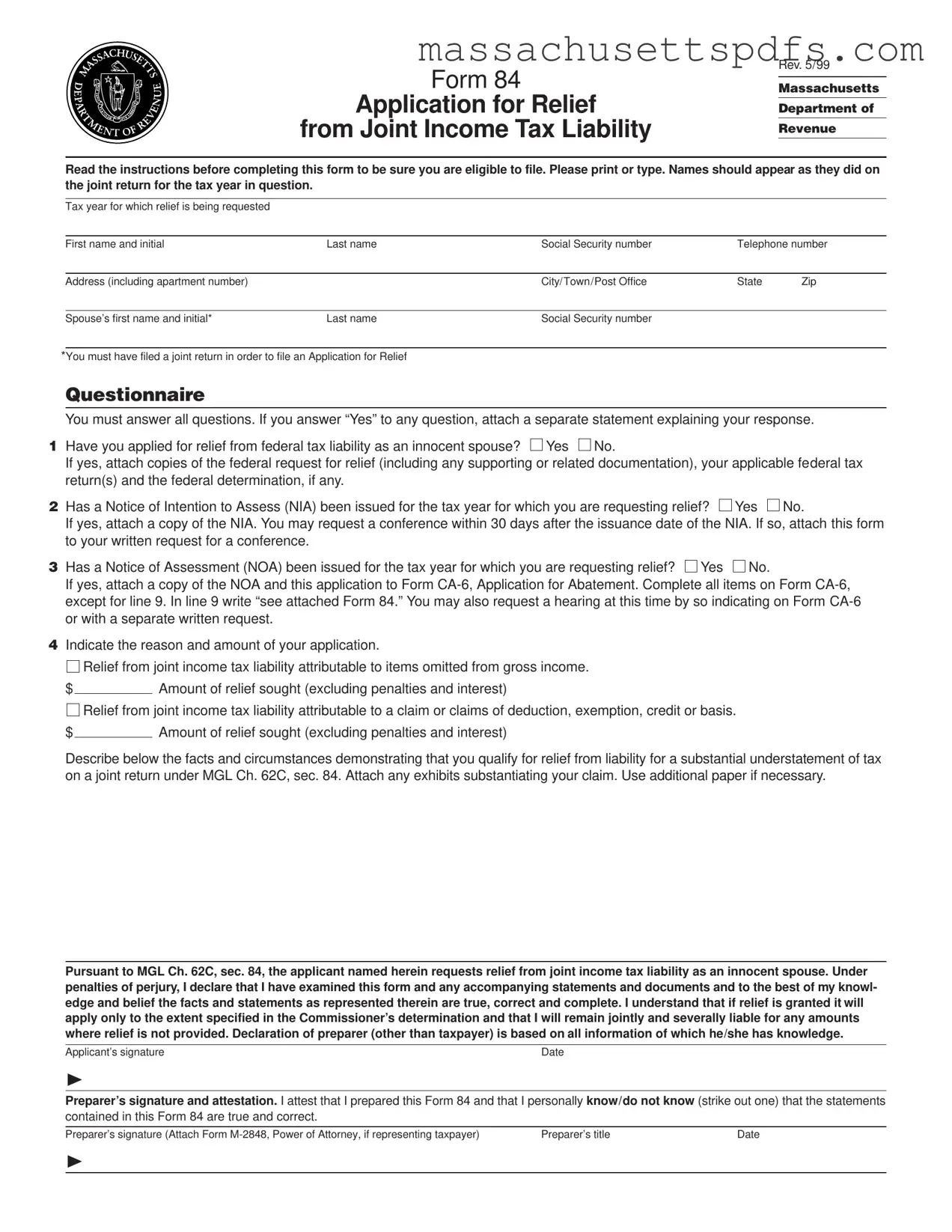Official Massachusetts 84 Template
The Massachusetts 84 form, officially known as the Application for Relief from Joint Income Tax Liability, is a document used by taxpayers seeking relief from joint tax obligations due to circumstances involving substantial understatement of tax. This form allows individuals who filed a joint return to request relief if they can demonstrate that they were unaware of any erroneous items reported by their spouse. Proper completion of the form is essential to ensure eligibility for relief.
To begin the process of seeking relief, fill out the form by clicking the button below.
Launch Editor Here
